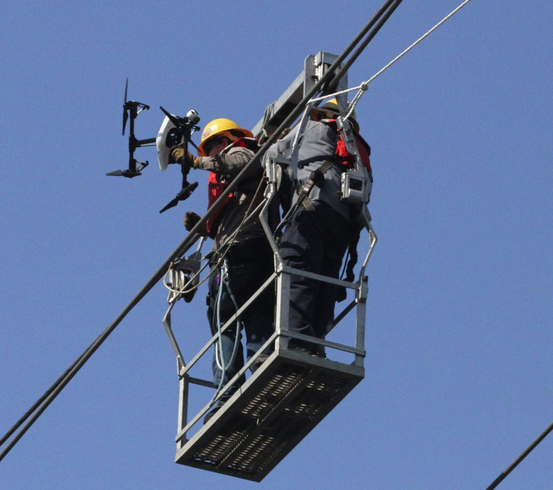5 Miles of Luck and an AWOL Drone Owner

Two articles in the news this past week showcased the dangers posed by drones in the hands of untrained hobbyists. As reported by Coral Garnick in her article in the Seattle Times, a drone was stuck in a high voltage transmission line running above houseboats on Lake Union (just north of downtown Seattle). The stuck drone was causing a loud buzzing and the line was running at a lower efficiency. Since the line was elevated 120 feet above the lake, a simple bucket truck ‘rescue’ was not possible. Workers had to reroute power, shut down the line and rent a ‘transmission line carriage’ to carry the worker that untangled the drone from the line. Total cost to Seattle City Light? $35,000. Not surprisingly, the drone owner is AWOL. Seattle police took custody of the drone and are looking for its owner.
The second article, by Hiawatha Bray (technology columnist for the Boston Globe) is titled, “Don’t be that guy – learn to fly your drone.” Bray’s article is primarily about the acute need for drone operators to be trained before operating the vehicles in public. He interviewed the owner of a startup company that specializes in drone operator training. The owner related a story about a friend that launched a DJI Phantom without resetting the ‘home point’ (the point that the drone will return to if commanded or if the communication link with the operator is lost). The drone sped away towards the previously-set home point and flew five miles without any control being exerted by a human operator. As Bray points out, it was pure luck that neither a tall apartment complex nor an active airport was along the path between the new launching point and the old home point. If the old home point had been Newark, New Jersey and the new launch point had been Jamaica, New York (western Long Island), the drone would almost assuredly have crashed into a skyscraper (lower Manhattan lies between the two).
Bray’s simple message is “Don’t be that guy.” Learn to fly the drone before operating it. I agree wholeheartedly but must note the obvious culpability of the drone manufacturers. Without a tremendous amount of advance planning and coordination, it is quite obvious that a home point located more than line-of-sight distance (roughly, half a mile) from the start point is an unsafe distance to fly over without direct operator involvement. Did it ever occur to the manufacturer to place an upper limit on this distance? Did they ever think that this distance should be checked before launching in the first place? Did it ever occur to them that a pre-departure check list should be created and evaluated (in some form of built-in self-test) and the operator warned if certain parameters are exceeded?
Apparently not. Back in the day when model aircraft were flown almost exclusively in areas around RC flying fields, hobbyist unmanned aircraft were effectively self-regulated. As I have opined previously (see my post ‘Drones and the Law of Unintended Consequences‘), modern drones can be flown by anyone with a few hundred dollars in their pockets. No training is needed to launch them and, under ideal circumstances (e.g., no strong winds and no operator-induced errors), they work as advertised. Modern drones rely on much of the technology found in smartphones. However, there is a huge difference between a drone and a smartphone. If you don’t know all the features of your smartphone, you are not inherently putting at risk the life of an innocent bystander.
The first time I sat behind the wheel of an automobile, my father said “Don’t ever forget that you are handling a lethal weapon.” Safety is a part of all driver education programs. While we are waiting for the federal government to update and/or establish the recreational and commercial drone ‘rules of the road,’ perhaps it is time for the drone manufacturers to act a little bit like Dad. The civilian drone industry can, should, and in fact, must, expand. The benefits to society far outweigh the risk. Nevertheless, the need for proper training and safe operation must be emphasized far, far more than it is today.
